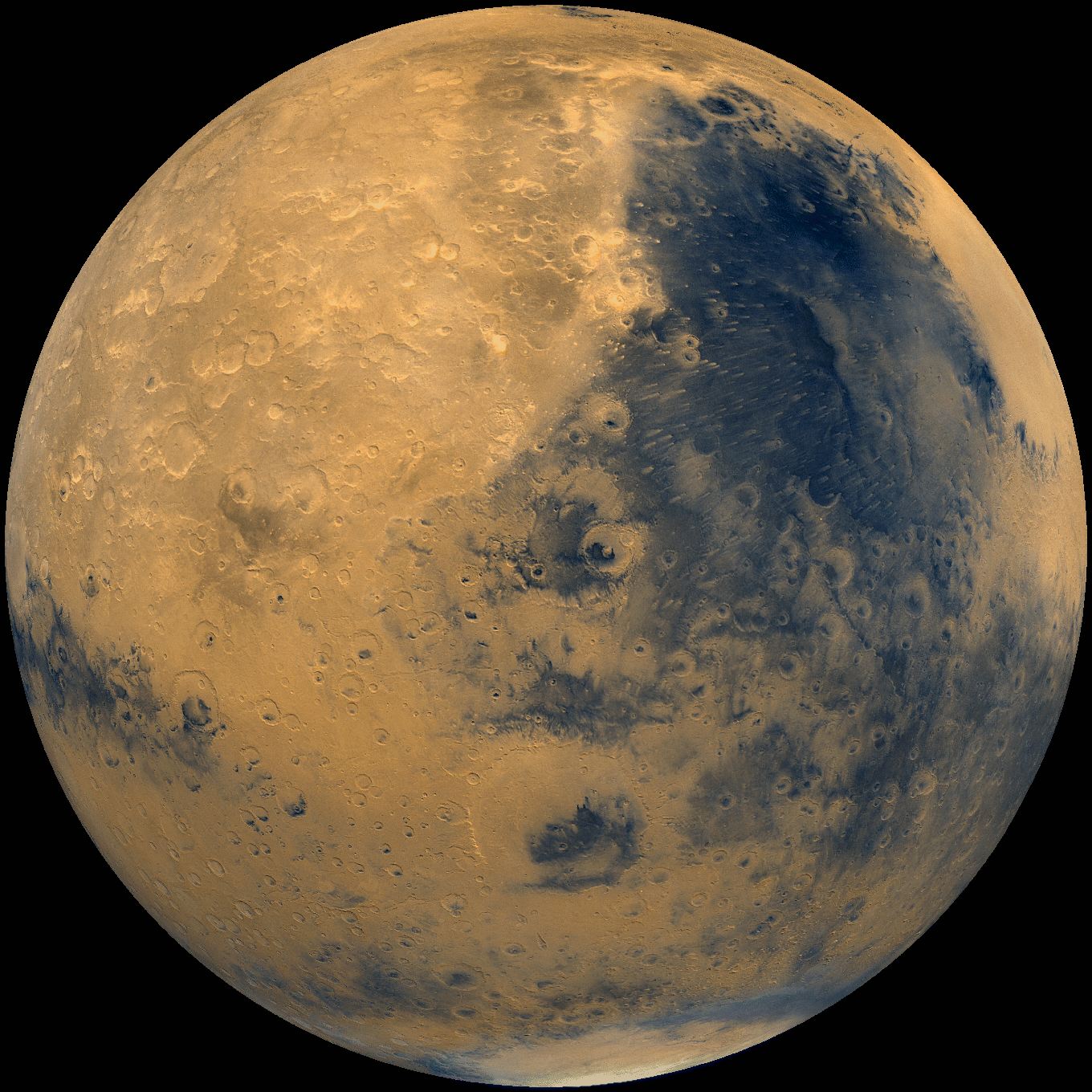Mars Hides More Water Than Thought, Study Suggests

The poles of Mars might not be the only place where water ice might be hidden on the Red Planet — now scientists suggest it could also lurk at the equator in craters.
This ice could impact future exploration of Mars, and perhaps even serve as a source of life-sustaining water for any human missions there.
Past research had suggested that water could once be found at the Martian equator. Now, however, the Red Planet's climate is thought to be too harsh, generally, for water to exist — the air on Mars is so thin that any ice on or near the surface of the relatively warm equator would quickly vaporize.
However, scientists have unearthed evidence that ice could be found right below the surface much closer to the equator than expected. Radar scans of equatorial hills on Mars also suggest those might harbor as much water as a polar ice cap, although researchers could not rule out the possibility their findings might reflect fluffy, dusty or loosely packed material that holds only a small amount of ice.
Now, using satellite imagery from Mars Global Surveyor and the Mars Reconnaissance Orbiter, planetary geologist David Shean at Malin Space Science Systems in San Diego suggests there appears to be ice-rich material buried at the bottom of at least 38 craters in the Sinus Sabaeus region near the Martian equator.
"It always amazes me that something like this could go unnoticed, even with hundreds of thousands of high-resolution images taken from orbit in the past 15 years," Shean told SPACE.com. "I suppose it is a testament to the fact that Mars is full of surprises."
This icy material appears similar to what's thought to be buried ice at midlatitude craters in Mars.
Breaking space news, the latest updates on rocket launches, skywatching events and more!
"I've seen thousands of images that show apparently ice-rich material and associated features on the floor of midlatitude craters in both hemispheres on Mars," Shean said. "The big surprise came when I noticed the same material within a crater near the Martian equator."
"A follow-up review of existing data revealed more of this material within nearby craters, and that's when I knew that I was on to something important," he added.
Another 30 craters or more also bear signs suggesting they once had buried ice.
"Our understanding of present-day conditions on Mars suggests that this material shouldn't exist near the equator, period," Shean said. "The fact that it does raises a number of exciting questions about recent climate change on Mars."
These findings corroborate claims that Mars experiences dramatic swings in climate whenever the tilt of its poles in relation to the sun shifts.
Earth's axial tilt, as this slant is called, wobbles slightly but tends to stay within a few degrees of its current position of 23.4 degrees. Mars, on the other hand, currently sits at 25.2 degrees but can sway widely between about zero and 60 degrees.
Computer simulations reveal the extraordinary changes in atmosphere that could result from these wobbles in the Red Planet's angle toward the sun. Such changes would make ice more stable at the equator and cause it to form there when the axial tilt exceeds 35 to 40 degrees, stemming from sources at the poles. This equatorial ice could have then survived in the modern Martian climate if it got buried under debris knocked loose from crater walls.
Shean and his colleagues are now monitoring several locations along the equator for new meteor impacts that could expose buried ice. Still, given how rare these impacts are nowadays and the limited amount of places where this ice might be hidden, "I'm not holding my breath," he said. "We must rely on additional satellite data and modeling studies."
Any discovery of ice at the equator could impact future exploration of the red planet, Shean said. If there is ancient ice buried within the craters there, it likely contains a valuable record of past climate conditions on Mars that scientists would want to analyze.
Furthermore, "equatorial sites are attractive destinations for future exploration due to increased insolation — more direct sunlight — and warmer temperatures," Shean said. "These conditions are desirable for solar-powered rovers, but they are also important considerations for future human exploration, which will require accessible water as a life-sustaining resource."
Shean detailed his findings online Dec. 22 in the journal Geophysical Research Letters.

Charles Q. Choi is a contributing writer for Space.com and Live Science. He covers all things human origins and astronomy as well as physics, animals and general science topics. Charles has a Master of Arts degree from the University of Missouri-Columbia, School of Journalism and a Bachelor of Arts degree from the University of South Florida. Charles has visited every continent on Earth, drinking rancid yak butter tea in Lhasa, snorkeling with sea lions in the Galapagos and even climbing an iceberg in Antarctica. Visit him at http://www.sciwriter.us
